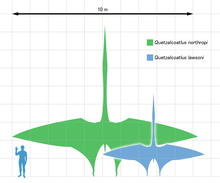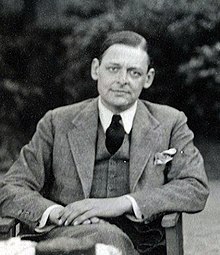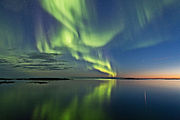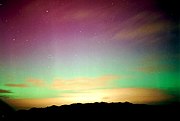User:Pixatplay/sandbox
Examples of linking
[edit]A cartoon centipede reads books and types on a laptop. A cartoon centipede reads books and types on a laptop.
When the link is clicked the image is displayed with other text information at a reasonable size. The user can click through the resulting medium-sized image to get to the full size highest resolution image.
You can also send the user directly to the image:
Media:Wikipedesketch.png
Testing maintenance templates:
[edit]
Testing numbered lists and outlines
[edit]- Precambrian supereon :(The Precambrian accounts for 88% of geologic time)
Testing tables & links
[edit]| PixAtPlay's user books | Wikipedia coding | Other references |
- Testing wikitables #1
| PixAtPlay's WP User Books | Help With Wiki Coding | Optional Col #3 |
|---|---|---|
| Welcome to Deep Time | Wiki Markup Language | Optional Col #3 |
| Wikipedia picture tutorial | ||
| Wiki help with images | ||
| Wiki help with tables |
| PixAtPlay's WP User Books | Help With Wiki Coding | Optional Col #3 |
| Welcome to Deep Time | Wiki markup language | |
| Wikipedia picture tutorial | ||
| Wiki help with images | ||
| Wiki help with tables |
| Header text | Header text | Header text |
|---|---|---|
| Example | Example | Example |
| Example | Example | Example |
| Example | Example | Example |
| Example | Example |
| Example | Example |
| Example | Example | Example |
- Commenting out code
Testing Article: Texas fossils
[edit]
- Mosasaurs
Mosasaurs (from Latin Mosa meaning the 'Meuse river', and Greek σαύρος sauros meaning 'lizard') are an extinct group of large marine reptiles. They became extinct as a result of the K-T extinction at the end of the Cretaceous period, approximately 66 million years ago.
The Onion Creek Mosasaur, Mosasaurus maximus, was discovered in the rocks of Onion Creek near McKinney Falls State Park near Austin, Texas, in 1935. The fossil can be viewed at the University of Texas at Austin, Texas Memorial Museum. Mosasaurs lived 70-66 million years ago and were up to 69 feet long. The Onion Creek Mosasaur is 30 feet long, about 12 feet of which are tail.[1]
- Pterosaurs

Also on view at the Texas Memorial Museum at Austin is the Texas Pterosaur, Quetzalcoatalus northropi, which was discovered in Big Bend National Park in West Texas by geology students from the University of Texas at Austin in 1971. With a wingspan of 40 feet, Quetzalcoatalus northropi is the largest flying creature ever found and is thought to have made intercontinental flights. Quetzalcoatal is from the Late Cretaceous period, 68-66 million years ago.[2]
A similar pterosaur, Quetzalcoatlus.sp, is located at the Houston Museum of Natural Science.
Curabitur pretium tincidunt lacus. Nulla gravida orci a odio. Nullam varius, turpis et commodo pharetra, est eros bibendum elit, nec luctus magna felis sollicitudin mauris. Integer in mauris eu nibh euismod gravida. Duis ac tellus et risus vulputate vehicula. Donec lobortis risus a elit. Etiam tempor. Ut ullamcorper, ligula eu tempor congue, eros est euismod turpis, id tincidunt sapien risus a quam. Maecenas fermentum consequat mi. Donec fermentum. Pellentesque malesuada nulla a mi. Duis sapien sem, aliquet nec, commodo eget, consequat quis, neque. Aliquam faucibus, elit ut dictum aliquet, felis nisl adipiscing sapien, sed malesuada diam lacus eget erat. Cras mollis scelerisque nunc. Nullam arcu. Aliquam consequat. Curabitur augue lorem, dapibus quis, laoreet et, pretium ac, nisi. Aenean magna nisl, mollis quis, molestie eu, feugiat in, orci. In hac habitasse platea dictumst.
Fusce convallis, mauris imperdiet gravida bibendum, nisl turpis suscipit mauris, sed placerat ipsum urna sed risus. In convallis tellus a mauris. Curabitur non elit ut libero tristique sodales. Mauris a lacus. Donec mattis semper leo. In hac habitasse platea dictumst. Vivamus facilisis diam at odio. Mauris dictum, nisi eget consequat elementum, lacus ligula molestie metus, non feugiat orci magna ac sem. Donec turpis. Donec vitae metus. Morbi tristique neque eu mauris. Quisque gravida ipsum non sapien. Proin turpis lacus, scelerisque vitae, elementum at, lobortis ac, quam. Aliquam dictum eleifend risus. In hac habitasse platea dictumst. Etiam sit amet diam. Suspendisse odio. Suspendisse nunc. In semper bibendum libero. Curabitur pretium tincidunt lacus. Nulla gravida orci a odio. Nullam varius, turpis et commodo pharetra, est eros bibendum elit, nec luctus magna felis sollicitudin mauris. Curabitur pretium tincidunt lacus. Nulla gravida orci a odio. Nullam varius, turpis et commodo pharetra, est eros bibendum elit, nec luctus magna felis sollicitudin mauris.

Curabitur pretium tincidunt lacus. Nulla gravida orci a odio. Nullam varius, turpis et commodo pharetra, est eros bibendum elit, nec luctus magna felis sollicitudin mauris. Integer in mauris eu nibh euismod gravida. Duis ac tellus et risus vulputate vehicula. Donec lobortis risus a elit. Etiam tempor. Ut ullamcorper, ligula eu tempor congue, eros est euismod turpis, id tincidunt sapien risus a quam. Maecenas fermentum consequat mi. Donec fermentum. Pellentesque malesuada nulla a mi. Duis sapien sem, aliquet nec, commodo eget, consequat quis, neque. Aliquam faucibus, elit ut dictum aliquet, felis nisl adipiscing sapien, sed malesuada diam lacus eget erat. Cras mollis scelerisque nunc. Nullam arcu. Aliquam consequat. Curabitur augue lorem, dapibus quis, laoreet et, pretium ac, nisi. Aenean magna nisl, mollis quis, molestie eu, feugiat in, orci. In hac habitasse platea dictumst.
Example image displays
[edit]Table display
[edit]Wiki gallery
[edit]-
Malaccensis drawing by W Miller
-
Buddhabrot 3-D Fractal by Vlad2i
-
Trilobites drawing, Joachim Barrande
Alternate Wiki gallery
[edit]-
The Aurora Borealis, or Northern Lights, shines above Bear Lake, Eielson Air Force Base, Alaska. Photo by Senior Airman Joshua Strang.
-
Red and green Aurora in Fairbanks, Alaska. Only with stronger Aurorae do the red emissions intensify to be seen. Photograph by Brocken Inaglory.
-
Aurora and sunset. Photo taken at Stave on Andoya island, Norway, by Frank Olsen.
-
Aurora Australis Display taken by Paul Moss at Wellington, New Zealand.
-
Construction on the George Washington portrait at Mount Rushmore, c. 1932.
-
Washington is commemorated on the quarter.
-
Washington is also commemorated on some dollar coins.
Testing Quotes
[edit]
We shall not cease from exploration
And the end of all our exploring
Will be to arrive where we started
And know the place for the first time. Four Quartets, "Burnt Norton"
T. S. Eliot
[edit]- Genuine poetry can communicate before it is understood.[3]
- Immature poets imitate; mature poets steal; bad poets deface what they take,and good poets make it into something better, or at least something different.[4]
- From Four Quartets,"East Coker"
Home is where one starts from.
As we grow older
The world becomes stranger, the pattern more complicated
Of dead and living. Not the intense moment
Isolated, with no before and after,
But a lifetime burning in every moment,
And not the lifetime of one man only
But of old stones that cannot be deciphered.
Love is most nearly itself
When here and now cease to matter.
Old men ought to be explorers
Here or there does not matter
We must be still and still moving
Into another intensity
For a further union, a deeper communion
Through the dark cold and the empty desolation,
The wave cry, the wind cry, the vast waters
Of the petrel and the porpoise.
- From The Cocktail Party (1949)
Half the harm that is done in this world
Is due to people who want to feel important.
They don't mean to do harm - but the harm does not interest them.
Or they do not see it, or they justify it
Because they are absorbed in the endless struggle
To think well of themselves.
- From Four Quartets
At the still point of the turning world.
Neither flesh nor fleshless;
Neither from nor towards; at the still point, there the dance is,
But neither arrest nor movement.
-T.S. Eliot
Examples: Embedded music
[edit]- Music
Random
[edit]References
[edit]- ^ "Onion Creek Mosasaur". Texas Memorial Museum, University of Texas at Austin. Retrieved 30 December 2015.
- ^ "Great Hall Exhibits". Texas Memorial Museum, University of Texas at Austin. Retrieved 30 December 2015.
- ^ Eliot, T. S. (1929). The Sacred Wood, "Dante," a biographical essay.
- ^ Eliot, T. S. (1920). The Sacred Wood, "Philip Massinger," a biographical essay.
















